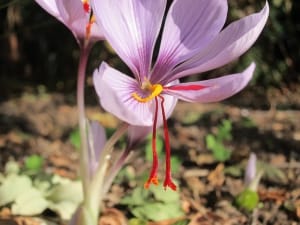Prediction of harvesting 246 tons of saffron flowers in Khorasan Razavi
The head of saffron of Jihad-e-Keshavarzi of Khorasan Razavi announced the forecast of harvesting more than 246 tons of saffron flowers
in the province during the current year.
Ramin Asmi stated:
Last year, 246 tons of saffron flowers were harvested from the farms of the province.
Every 75 to 80 kg of saffron flowers has one kilogram of flowers and due to the increase in the area under saffron cultivation this year,
the harvest will increase to some extent.
He pointed out:
According to the measures of the Jihad-e-Agriculture Organization to replace the new methods of planting and harvesting,
if problems such as early frosts and heavy and early rainfall do not occur, the amount of saffron harvest will increase.
The head of saffron of Jihad-e-Keshavarzi of Khorasan Razavi announced the area of saffron cultivation in the farms of the province
during the last year as 64 thousand hectares and added:
according to the forecasts, this amount will reach 68 thousand hectares this year.
Asmi also announced the beginning of the initial harvest of saffron in the fields of some parts of the province,
such as the cold parts of Torbat-e Heydariyeh city.
He said:
In the comprehensive plan of saffron in Khorasan Razavi,
the goal is to increase the yield per unit area so that the amount of saffron harvested from 3.5 to 4 kg per hectare
reaches 8 to 10 kg and the development of cultivated area is not included in this plan.
The head of saffron of Jihad-e-Keshavarzi of Khorasan Razavi reminded:
Due to climate change in the northern parts of the province and also more profit and the need for less water in saffron planting,
the area under cultivation of this product increases to some extent every year.
Asmi continued:
Cultivation of crops such as sugar beet, which requires a lot of water, is not economically viable,
and due to the comparative advantage of our region for planting saffron and pistachios and the high income of these crops,
some farmers are looking for alternative crops.
Regarding the price of saffron, he said:
These prices are determined by the Exporters’ Union and other officials related to saffron.
Nominal mentioned the planting of larger onions,
organic fertilizers and proper planting date as new methods in saffron cultivation and the application of hygienic
methods and appropriate harvest time as new methods in harvesting this crop.







Get Social